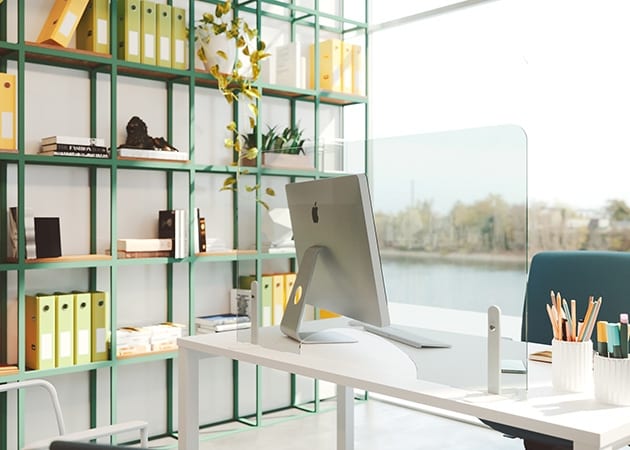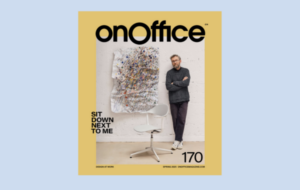 Actiu has commercially launched a range of protective screens for workplaces|||
Actiu has commercially launched a range of protective screens for workplaces|||
It was over seven weeks ago when Boris Johnson, in a then daily COVID-19 television briefing, announced that the UK was going into a state of lockdown, forcing businesses and organisations that had not already enacted work from home measures to do so, or else place their staff on furlough.
However, with news that a draft Government strategy for the UK’s return to work is in the pipeline that calls on employers to stagger shift times and change workplaces to mitigate the risk of COVID-19 transmission, a vision of the workforce inhabiting office spaces again during the decline of the pandemic has been proffered.
With vast amounts of time, energy and money spent on transitioning the modern workplace into open, fluid and shared spaces, office life post-COVID-19 has some design challenges ahead in creating an environment that make employees feel safe and comfortable. Ashley Lawrence, Head of Interiors at Crown Workspace, suggests that employers will have to be flexible and compromise to win workers back around to the office concept: “When people have been used to social distancing and staying two metres apart, the idea of going into an office and sharing a desk space with dozens of colleagues is going to feel like a daunting challenge,” he explains.

Sintered stone brand Neolith believes offices will specify larger desks in time to come: they allow staff members to successfully practice social distancing and are easier to clean.
Desking may be staff’s biggest reservation in transitioning back to an office after time spent working from home. Hot desking policies, which have grown in use in large organisations over the last decade, don’t offer hygenic peace of mind for those anxious about venturing back into a world where the coronavirus is still active. “Temporarily introduce a fixed-desk approach,” says a new guide from facilities management service Atalian Servest. It also suggests that, in the short time, desks, or at least workers, should be given more space. “The ‘middle’ desk can be taken out of action by removing the chair, equipment and/or putting a large red cross on it. To reinforce the message, consider a green tick on the desks which should be occupied.”
To reduce density, desks can also be taken out and put into storage, while the geometry of desks can also be changed so that employees are not sat face-to-face, explains global workplace design experts Steelcase. While also reducing wasted space to make this possible, meeting rooms may need to be temporarily turned into single offices to help deal with subsequent capacity issues.
Signage, which has become a common piece of design language in those spaces still open during the COVID-19 outbreak, will help to act as visual cues to remind staff of social distancing requirements.

Actiu’s new protective screens have already been donated to a number of hospitals in Spain, where the company is based.
In the short term, it’s likely that extended height wipeable privacy screens will be employed to protect workstations, and office suppliers, including Actiu, whose COVID-19 response screens are pictured, are already priming themselves for a rush to help futureproof office spaces. Whether these are a temporary solution or become a permanent fixture of a post-pandemic office remains to be seen.
These questions that the COVID-19 outbreak raises for the future of office design extend far beyond the first few months of employees returning to their places of work. It’s a defining moment in how people view personal and communal spaces, and the job of office designers will be to respond to that. Materials that are easy-to-clean and hygienic will undoubtedly define many new product launches in years to come, while design and behaviour will also be modified to ensure that employees feel their work spaces are clean.
With the Government’s strategy for returning to work on the horizon, OnOffice asks the experts what they expect the design landscape of the post-pandemic workplace to look like.























